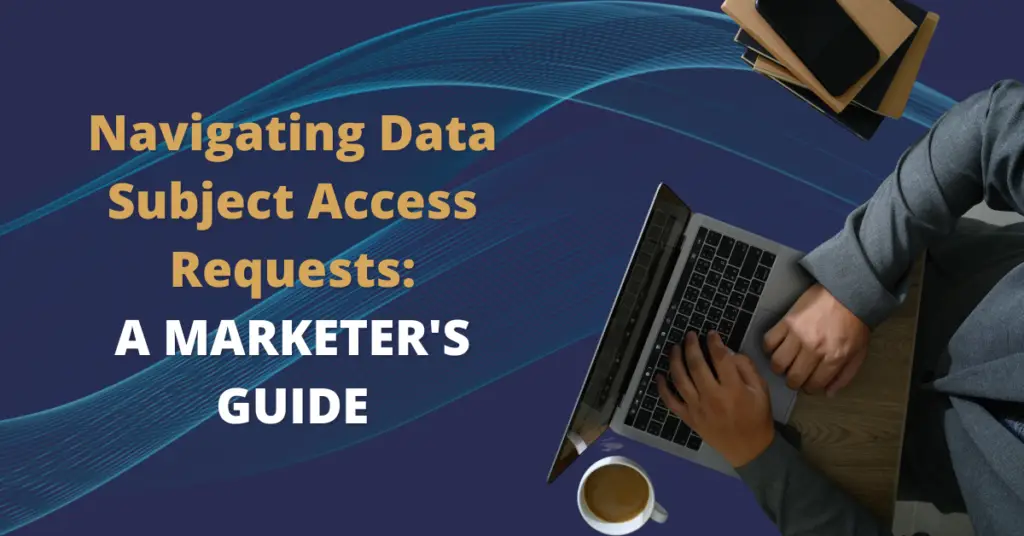
With each new privacy law that emerges, the rights of consumers to assert control over their personal data become more formidable, and the significance of data subject access requests (DSARs) gains greater prominence. As a marketer, are you positioned not just to comply but to take the lead in revolutionizing these interactions? It’s not just about adhering to the legal mandates—it’s an exciting opportunity to elevate the overall customer experience by seamlessly incorporating DSARs!
Empowering Consumer Rights
The foundation of this movement lies in these key consumer rights:
- Right to access: It’s empowering for individuals to have the ability to peer into the data that a company holds about them. This transparency builds trust and fosters a sense of control.
- Right to update: People change, and so does their data. This right acknowledges the dynamic nature of personal information and allows individuals to correct inaccuracies, leading to more accurate insights and communications.
- Right to portability: This right introduces the element of choice, enabling consumers to request their data or transfer it to another organization. This portability is a testament to a customer-centric approach, where the confines of a single platform no longer bind individuals.
- Right to be forgotten: The power to request the erasure of personal data signifies a fresh start, a clean slate. It’s a recognition that individuals should be free to disconnect.
These rights empower customers to file DSARs. Although no single law outlines an exact process for fulfilling DSARs, several well-established best practices shine a light on the path forward. Let’s explore the exciting ways marketers can connect with customers using DSARs!
Do’s for Elevating Customer Experience through DSARs
Plan Your Approach
DSARs are not just a checkbox on the compliance list—they’re an opportunity to show your customers that you care. View this process as a journey, not just a destination. Consider automating some more repetitive tasks, so your team can focus on the human touch, providing a personalized response that leaves a lasting positive impression.
Create a Request Intake Workflow
Consider DSARs as a bridge between your brand and your customers, which should be as accessible and welcoming as possible. Let’s look at the California Privacy Rights Act (CPRA) as an example. The CPRA emphasizes providing multiple channels for customers to submit DSARs, but allows companies to choose their preferred methods.
Why not make your DSAR intake methods as accessible and user-friendly as possible—like a simple online form? The ease and efficiency of this approach lend themselves well to DSAR automation while also creating a memorable, positive experience for your customers.
Incorporate Consumer Validation
Validation is not just about confirming the requester’s identity—it’s about creating a secure and reassuring environment for your customers. After all, user trust is paramount. Taking the time to verify a user’s identity shows your customers that you take the utmost care to protect their data from unauthorized access.
For basic data requests, simple authentication data like sending a link to an email address, asking for account numbers or addresses might suffice. However, for more sensitive data, consider offering additional layers of validation, such as security questions or document uploads. This extra effort not only ensures compliance but also demonstrates your commitment to protecting your customers’ interests.
Invest in Training

Your staff members are ambassadors for your brand. And the better trained and equipped they are to handle incoming DSARs, the better it will reflect on your company as a whole.
Providing comprehensive training to all staff members involved in handling DSARs is essential. It’s not just about understanding the legal requirements—it’s about internalizing the importance of these interactions in fostering customer trust. When your entire team is aligned with the same goal of providing exceptional customer experiences, you create a truly effective privacy strategy.
Don’ts for Elevating Customer Experience through DSARs
Don’t Force Account Creation
Remember, customer convenience is king! Laws like the CPRA prohibit account creation for DSARs, but legal requirements aside, creating a smooth experience shows respect for your customers. It demonstrates that you won’t put unreasonable barriers between them and their rights. This demonstrates your commitment to a customer-first approach.
Don’t Let Requests Slip Through the Cracks
Promptness is a virtue when it comes to responding to DSARs. Although the exact timeframes vary between different privacy laws, striving for the shortest possible response time should be a shared goal. When customers receive prompt responses, it shows that you respect their time and helps to build continued trust in your brand.
Don’t Request Unnecessary Personal Information
Transparency and data minimization go hand in hand. When designing your intake process, ensure that you collect only the essential information needed for request verification. Show your customers that you won’t ask them to hand over everything to you. Remember, when it comes to data collection, less is more!
The Case for DSAR Automation
Automation isn’t as complicated as it sounds. Embracing DSAR automation allows you to turn a typical rights request into an exciting customer engagement tool. Automating steps such as data intake and verification is a game changer—they streamline the entire DSAR journey, both for you and your customers. And the more efficient and simpler the process is, the more satisfied your customers will be.
Conclusion
DSAR fulfillment is a chance to showcase your brand’s commitment to customer satisfaction. And luckily, it’s not difficult for marketers like you to navigate DSARs to enrich customer experiences. Be proactive and transparent, and prioritize privacy to forge unbreakable bonds with your customers.
Ready to transform your DSAR fulfillment strategy into a customer experience triumph? Connect with our privacy experts today!





